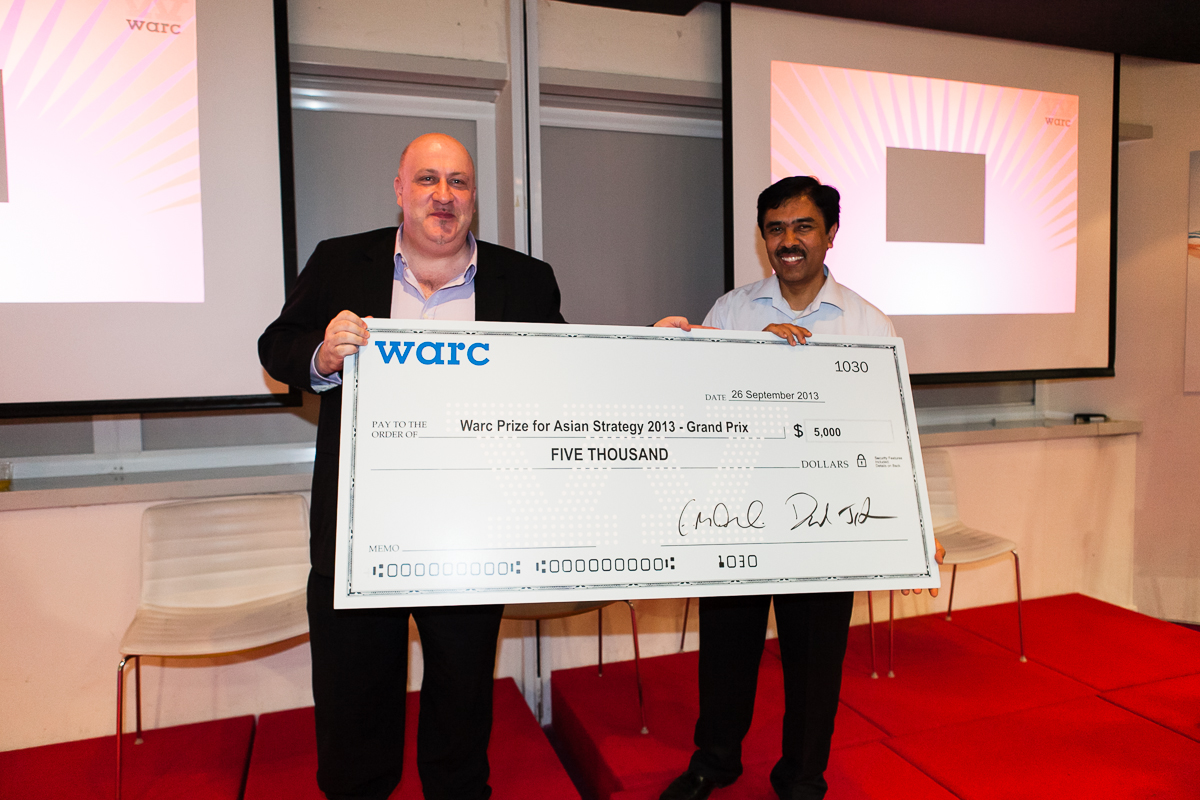To mark its tenth anniversary, WARC’s Asia managing director, Edward Pank looks back at the genesis of the WARC Prize for Asia Strategy and the region’s strategic evolution since.
Nine years ago, WARC took the bold step to open an office in Asia, selecting Singapore as a key intersection of our core markets. This involved relatively humble beginnings, with one man and his trusty laptop renting a desk from like-minded friends in the industry. While the set-up was modest, our ambition was anything but. To thrive in this region, we needed to overcome the perception that we were just another UK-headquartered company trying to crack Asia and ride the rising economic tide of growth in the region.
Our success relied on the usefulness and relevance of our product; we needed to build a corpus of evidence-based best practice that celebrated the best strategic thinking from the many markets that make up this diverse region.
That made the decision to launch the WARC Prize for Asian Strategy a relatively easy one. Our intent was to create a body work that truly represented the dynamic and ever-changing nature of Asia.
When we launched the Prize in what was already a crowded awards landscape, we stood out by offering cash prizes rather than charging for entries. Back then, we used to host events to unveil the winners and to create a bit of fun at the events, gave out giant-sized comedy cheques. To this day, we’re not sure how the then CEO of BBDO Guerrero managed to get one of said cheques all the way back to Manila as hand luggage.

Blast from the past: Tony Harris (then CEO of BBDO Guerrero) receiving the giant cheque for 'It's more fun in the Philippines' campaign from Unilever's BV Pradeep in 2013
Over the last ten years, there have been many changes in the anatomy of effectiveness of an Asian campaign. The media-mix has of course become more digital with mobile and social playing a more central role. Brand experience and influencers are now factors in most successful campaigns. Purpose as a strategy is now fairly common-place and in line with consumer values seems to be giving way to brand activism. But what seems to be a recurring constant over the last ten years is the critical need for cultural relevance.
Burgeoning middle-classes with heightened aspirations and expectations mean constantly shifting consumer attitudes and behaviour. Indeed, to succeed, Western brands quickly learnt that adapting global campaigns without embedding a culturally rich insight would most likely fall at the first hurdle. An even better solution was to create local work from scratch. This additional investment typically reaped greater returns. Such approaches spawned campaigns for Gillette like Shave Sutra in India or Shave Sexy in China, examples of rich local insight, helping global brands connect with their Asian audiences.
Of the 1,425 cases we have published through the Prize over the last decade, the stand-out campaign for me has to be SK-II’s Marriage Market Takeover and winner of the Grand Prix in 2017. What is interesting about this case is that it was devised by a Swedish agency, Forsman & Bodenfors.
Their perspective from outside the market meant they could ask the questions that others might have overlooked, and this position allowed them to focus in on the cultural tension of sheng nu (剩女) which translates to “discarded women”.
Women who, instead of following tradition and marrying at early age, found the confidence to forge their own destinies in life. A fine example of identifying a rich cultural insight and aligning the brand with the emotional journey of their audience. Very powerful indeed and the commercial results were significant. Evidence enough that, in this region, this model works.
From the launch of the Prize back in 2011, we took the very deliberate decision to strictly keep this an Asian Prize and not allow entries from our Pacific neighbours. The intent here was to showcase Asian thinking and help the region find its own strategic identity. Work from Australia and New Zealand is undeniably strong but the risk here was that it could overshadow a region that was coming of age in terms of planning.
With hindsight, this was a good decision and helped shine the spotlight on work that might have otherwise been overlooked and I believe we’ve achieved this without sacrificing the quality standard of the Prize. Indeed, in last year’s competition, we didn’t announce an overall Grand Prix as the judges didn’t find a worthy winner in that body of work.
Over the last ten years, this region has grown in strategic confidence and its reference points are no longer from the West but from the region itself. This is a cause that is close to our hearts at WARC and one that we want to continue to champion. Look out for further developments on this front later this year.
Ten years on, this region has seen incredible change. The skylines of our cities are completely different. Rural communities continue to be lifted out of poverty and the region continues to spawn an ever-increasing number of ‘home-grown’ brands. Asia is rising and we’re proud to have showcased the strategic journey so far.
This article is part of a special content programme marking the tenth anniversary of the WARC Prize for Asia Strategy. To find out more about this year’s Prize, click here.

